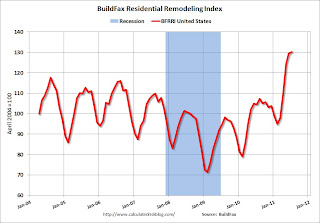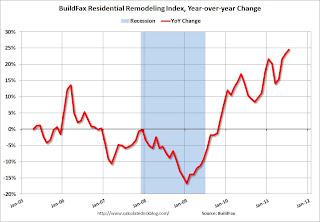Pimco Total Return Fund (PTTRX), the world’s largest mutual fund, is having its worst year versus rivals based on records going back to 1995, and
Bill Gross’s decision to dump Treasuries isn’t the only reason.
Gross bet almost $11 billion in the second quarter on an index of U.S. corporate credit risk, raised the amount of insurance the fund provides on sovereign debt and put $1.3 billion into Italian Treasury bonds linked to inflation, according to an August regulatory filing.
Since June 2010, Gross has been reducing the $245 billion fund’s vulnerability to interest-rate swings and increasing its reliance on credit quality by shifting from Treasuries to corporate and non-U.S. sovereign debt, a strategy that backfired last month. As the
U.S. economy slowed and Europe’s debt crisis worsened, investors sought the safety of Treasuries and sold the bonds Pimco had bet on, leaving the fund trailing 89 percent of competitors in August and 67 percent this year through Sept. 8, according to data compiled by Bloomberg.
“People are focusing on the Treasuries, but the real issue is that the other credit instruments didn’t do as well,” A. Michael Lipper, head of Lipper Advisory Services Inc., a Summit, New Jersey, firm that advises institutions on investing in mutual funds, said in a telephone interview. “They had way too much, short term, of the underperformers.”
The amount of protection issued by Pimco Total Return on debt tied to corporate borrowers, municipalities and sovereign governments outside the U.S. rose to $43.6 billion as of June 30 from $19.6 billion a year earlier, the filing shows.
Navigating ‘New Normal’
This year is shaping up to be Gross’s worst against U.S. total-return funds in data going back to 1995, the earliest year for which Bloomberg has rankings for Pimco’s flagship, which opened in May 1987. Gross hasn’t lost money in any year since 1999, when Pimco Total Return declined 0.3 percent, including dividends, and trailed 59 percent of the competition, according to data compiled by Bloomberg. In 2010, the fund returned 8.8 percent to beat 82 percent of its peers.
Gross today disclosed that he raised his holdings in U.S. Treasuries to the highest level since December 2010 as the fund trailed rivals. The fund increased its holdings of Treasury debt to 16 percent as of Aug. 31 from 10 percent at the end of July, according to data posted on Pimco’s website. Gross raised his investments in non-U.S. developed markets such as
Europe to 18 percent from 13 percent in the prior month, while mortgage holdings climbed to 32 percent from 25 percent.
‘Bouts of Volatility’
Selling Treasuries and buying corporate debt is a sound long-term strategy that will cause short-term weakness when investors are seeking havens, said Ed Goard, chief investment officer for fixed income at Birmingham, Michigan-based Munder Capital Management, and Michael Krushena, one of the firm’s senior portfolio managers.
“There will still be some bouts of volatility with the uncertainty going on in Europe and the unresolved lawsuit issues surrounding mortgages in the banking sector,” Krushena said in a telephone interview. “But looking further out than the next two or three months, we think corporate bonds are better investments.”
Pimco is seeking to navigate what Gross, the firm’s co- chief investment officer, and Mohamed El-Erian, its chief executive officer and co-CIO, called the “new normal,” a future marked by slower growth in developed markets, higher unemployment and more regulation. Gross last year forecast the end of the three-decade rally in bonds, a move that creates strategic challenges for Pimco, whose assets, totaling $1.34 trillion as of June 30, are mostly in fixed-income securities.
Manager of Decade
Pimco Total Return gained 3.9 percent this year through Sept. 8, with dividends, trailing the 6.6 percent advance by its benchmark, the BarCap U.S. Aggregate Total Return Value Index. The fund generated an average annual gain of 7.2 percent in the 10 years ended March 31, 2010, compared with 6.3 percent for the BarCap index, helping Gross earn Morningstar Inc.’s award as fixed-income fund manager of the decade.
Mark Porterfield, a spokesman for Pacific Investment Management Co. in
Newport Beach,
California, declined to comment.
The main factor in this year’s slump was Gross’s decision to sell Treasuries, according to Eric Jacobson, a Morningstar analyst. Treasury holdings fell to zero as of February and climbed back to 10 percent as of July 31, according to Pimco’s website, compared with 33 percent for the BarCap index. When demand for Treasuries soared last month, Pimco Total Return fell 0.8 percent as the BarCap Index rose 1.5 percent.
‘Rare Deviation’
Current yields on 10-year government bonds don’t adequately compensate investors for inflation risk, Gross has said publicly. Government efforts to stoke the economy through quantitative easing, including the
Federal Reserve’s purchase of $600 billion in Treasuries over eight months, artificially repressed U.S. rates, leaving investors with negative real returns when inflation was factored in, he said in a June
investment outlook posted on Pimco’s website.
“Gross’s bearish call on Treasuries was an extremely rare deviation from the Pimco script of a lower-than-consensus forecast” for gross domestic product, inflation and household spending, said William Powers, a former Pimco portfolio manager who now runs Strand Partners, a family office in
Los Angeles, and helps manage two real estate funds.
Pimco’s solution, as Gross described in his commentary, was to replace Treasuries with corporate debt as well as emerging- market and non-agency mortgage securities. The bonds are less sensitive to interest-rate changes, and thus less affected by quantitative easing, Gross said. That made the debt perceived as riskier a relative bargain, according to Pimco.
‘Safer Spread’
“The credit piece,” Gross wrote, “is a safer spread than the duration piece.”
Rather than buy actual bonds, Gross used credit-default swaps, derivative contracts that are similar to providing insurance on debt securities. Under the terms of a credit- default swap, Pimco receives annual premiums in return for agreeing to pay the insured an amount equaling the face value of the bond, minus any residual value, should the issuer of the debt fail to meet its obligations.
The amount of protection sold by the fund on debt issued by individual companies, municipalities and non-U.S. sovereign governments increased to $22 billion as of June 30 from $13.9 billion a year earlier, according to a quarterly report filed Aug. 26 with the U.S. Securities and Exchange Commission.
Rising Insurance Cost
The 2011 figures included swaps covering $6.9 billion of debt issued by emerging-market countries
Brazil,
China,
Mexico and Indonesia, compared with $2.8 billion a year earlier. The fund had sold credit protection on $3.6 billion of sovereign debt from
France, Italy,
Germany and
Spain as of June 30, the filing shows, along with a combined $4.1 billion of swaps on U.K. gilt and Japanese
government bonds.
The face value of swaps the fund sold on indexes for high- yield, emerging-market and investment-grade debt rose to $21.6 billion at midyear from $5.6 billion in June 2010. The fund sold $10.7 billion of credit protection on the Markit North America Investment Grade Index in the second quarter, raising the total to $11.8 billion.
The cost of insuring non-Treasury debt has soared since July, a trend that would require Pimco Total Return to mark down its existing agreements in computing daily net asset value. Credit-default swaps rise in value as investor confidence erodes, causing mark-to-market losses for those that have sold protection on bonds.
The fund’s coverage on the Markit index would have shown a paper loss of $115.7 million as of Sept. 6, according to Bloomberg data, compared with the $47.8 million gain Pimco calculated as of June 30 in its
SEC filing.
‘Flight to Safety’
“The recent spread widening of the index is attributable to the flight to safety moves,” Otis Casey III, director of credit research in the New York office of Markit, a London-based financial information-services company, said in an e-mail response to questions. Investors “shunned risky assets due to continued concerns of the Euro-zone sovereign-debt crisis, policy uncertainty in the U.S. and fears of a slowdown in global economic growth,” Casey said.
Insurance on Italian government debt, priced at 172 basis points as of June 30, more than doubled to 451 basis points on Sept. 6, according to data compiled by Bloomberg. The cost of protecting Brazilian bonds rose 45 percent to 160 basis points, in part because default coverage on emerging-market countries had grown too cheap relative to prices on European debt, said Ajay Jani, a managing director at Gramercy, a Greenwich, Connecticut, investment manager. A basis point, or one-hundredth of a percent, equals an annual payment of $1,000 on a contract protecting $10 million of debt.
Germany, Spain
“It got to the point where Brazil was trading inside of France,” said Jani, whose firm oversees $2.1 billion and specializes in emerging-market securities. “People aren’t used to seeing that kind of relationship.”
In the second quarter, Gross also acquired a German government bond with a market value of $527 million as of June 30, Spanish government debt valued at $1.6 billion and about $1.3 billion of Italian Treasury bonds indexed to Euro-area inflation. The fund’s Italian Treasury bonds have all dropped in price since June 30, including a 12 percent decline in those slated to mature in Sept. 2021, according to Bloomberg data.
“Linkers have a higher duration and a higher credit-risk exposure, so in times of stress you would expect to see nominal bonds outperform linkers,” said
David Schnautz, a fixed-income strategist at Commerzbank AG in
London. The
European Central Bank hasn’t included the Italian inflation-linked debt in a purchase program that has given other types of bonds a “massive boost,” according to Schnautz.
Financial Services
Pimco Total Return’s positions in debt issued by financial- services firms, such as Citigroup Inc. and American International Group Inc., rose to 24 percent of net assets as of June 30 from 20 percent a year earlier, according to last month’s SEC filing. These percentages don’t reflect derivatives such as credit-default swaps. The BarCap benchmark had a 7.2 percent weighting for financial-company bonds as of June 30, according to Barclays Capital Inc.
Discussing “negative” or “neutral factors” for its performance in the second quarter, Pimco Total Return’s quarterly report cited “an overweight of bonds of financial companies” along with holdings related to non-agency mortgages. The financial bonds “lagged the broader corporate market” and “risk aversion put downward pressure on prices” of mortgage- backed securities, Pimco said.









 In recent years, advances in telecommunications, computing capacity and financial software platform capabilities have seen huge growth in the field of High Frequency and Algorithmic Trading (now accounting for over 70% of all equity trades placed on US exchanges and in excess of 77% in the UK). HFT firms (which can
In recent years, advances in telecommunications, computing capacity and financial software platform capabilities have seen huge growth in the field of High Frequency and Algorithmic Trading (now accounting for over 70% of all equity trades placed on US exchanges and in excess of 77% in the UK). HFT firms (which can 